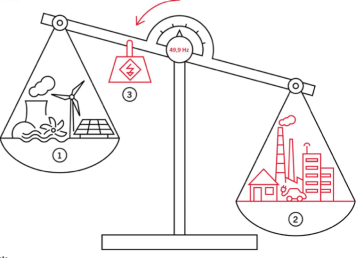Previous Presentations
All the presentations given by ETH PhD students are available below, listed by semester:
25.05.2021

Tuning the design of a 3D printed building facade for solar radiation response
Bharath Seshadri, Architecture and Building Systems, D-ARCH. Download Slides (PDF, 3.6 MB)
The building construction industry is adapting large-scale 3D printing and robotic fabrication techniques to, among other efficiency and cost benefits, reduce the lifecycle Green House Gas (GHG) emissions of new buildings. This research project aims to fabricate a low-GHG emission building facade by encoding environmental performance using a combination of material selection, fabrication techniques, and bespoke geometry. This presentation describes the design methodology in response to solar radiation (shading and daylight transmission).
Bharath is a building systems engineer. He completed his education in Singapore and has since been a part of high-performance building construction projects in Asia, Europe, and the United States. His PhD is focused on heat-transfer processes within 3d printed building components. When he is not researching energy systems, he can be found experimenting with new cooking recipes and testing them on his dear friends.
18.05.2021

Sector coupling: How to integrate electric vehicles in a grid-friendly way?
Christine Gschwendtner, Group for Sustainability and Technology SusTec, D-MTEC
While electrification is an essential measure to decarbonize the transport sector, electric vehicles (EVs) can also support the decarbonization of the electricity sector. Consequently, these sectors are increasingly coupled, which results in both challenges and synergies. On the one hand, integrating high shares of intermittent, distributed renewable electricity supply and increased electricity demand load from low-carbon technologies such as EVs can challenge distribution grids by potentially coinciding with residential peak demand. On the other hand, controlled charging could turn EVs into assets for transmission system operators (TSOs), distribution system operators (DSOs), and electricity suppliers. This presentation provides an overview of the advances, challenges, and uncertainties of the grid-friendly integration of EVs.
11.05.2021

Microengineered hybrid fibers paving the way for a circular materials economy
Nicole Aegerter, Laboratory of Composite Materials and Adaptive Structures, D-MAVT
Microengineered hybrid fibers are a novel class of thermoplastic composite material which are produced by coating each individual reinforcement fiber with a precise amount of plastic. These filaments that are about seven times thinner than a human hair can be transformed into large parts like e.g. wind turbine blades simply by applying heat and a minimum amount of pressure. Having the right amount of a meltable plastic right where it is needed reduces the cycle time to manufacture parts and minimizes harmfulness for workers during production of parts while, unlike state-of-the-art, at the end of the product life the material is recyclable which paves the way for a circular materials economy.
Nicole is a third year PhD student at the Laboratory of Composite Materials and Adaptive Structures, CMAS Lab, in D-MAVT, and focuses on the challenges in manufacturing these fibers. Her work has contributed to project Antefil that aims at making those fibers available for industrial use. Besides spending time in the lab, she maintains a good work-life balance by spending her free time outdoors cycling, running, hiking or ski-touring.
The increasing penetration of renewable energy resources, such as wind and photovoltaic, brings severe challenges to the operation of modern power systems. As these units connect to the grid via power electronic interfaces, they increase the need for ancillary services on short time scales. While batteries are the most prominent candidate to supply this reserve, the presented research looks at demand response as an additional solution and relates their dynamic performances.
Johanna is a PhD student in the ETH D-ITET Power Systems Laboratory under the supervision of Prof. Gabriela Hug. After completing a Bachelor's degree in Electrical Engineering in Germany in cooperation with several transmission and distribution grid operators, she worked for a regional distribution grid provider for a while. Then she studied the Master in Energy Science and Technology at ETH Zürich and continued to study dynamic interactions in inverter-dominated power grids.
27.04.2021

Techno-economic analysis of PV-battery systems in Switzerland
Xuejiao Han, Power Systems Lab, D-ITET
Solar energy is widely recognized as a solution to tackle climate change by lowering worldwide greenhouse gas emissions from the energy sector. One of the means to enable the further development of PV installations is the use of battery storage, which is able to increase the PV self-consumption rate and also resolve the real-time imbalances caused by forecast errors. In this talk, we will present a techno-economic optimization model to analyze the economic viability of PV-battery systems for different customer groups in Switzerland. The customer groups are clustered based on their annual electricity consumption, rooftop size, annual irradiation and geographical locations. The simulations for a static investment model are carried out for years 2020-2050 and a comprehensive sensitivity analysis is conducted to investigate the impacts of individual parameters such as costs, load profiles, electricity prices and tariffs, etc.
Xuejiao Han is doing her doctoral research under Prof. Gabriella Hug in the Power Systems Laboratory, D-ITET.
Reference paper: Han, X., Garrison, J., & Hug, G. (2021). Techno-economic analysis of PV-battery systems in Switzerland. arXiv preprint arXiv:2103.16298.
20.04.2021

Are Combustion Engines Entirely Bad?
Omar Seddik, Institute of Energy and Process Engineering D-MAVT.
Omar’s presentation looks at how decarbonisation of the shipping sector might be possible, and how academia could help industry with relatively fast but accurate CFD simulation tools in order to speed up the process. Such a model will be included in the presentation.
After doing a bachelor in mechanical engineering in Cairo, Egypt, Omar worked for a couple of years in the engine industry before joining ETH. After completion of a Master in Energy Science and Technology (MEST), he is now undertaking doctoral research with Prof. Boulouchos in the Institute of Energy and Process Engineering D-MAVT. Previously a semi-professional basketball player, he's now retired, and enjoys playing the guitar in his free time.
13.04.2021

Artificial Intelligence and Data Analytics for the Operation and Planning of Power Distribution Grids
Thierry Zufferey, Power Systems Lab, D-ITET
Traditionally considered as a passive black-box component of power systems, the distribution grid currently undergoes a rapid transformation and sees the emergence of new types of loads (e.g., electric vehicles, electric heat pumps) as well as distributed energy resources (e.g., PV systems, home batteries). Their proper integration into the power system inevitably relies on more visibility. Consequently, advanced electricity sensor elements are massively rolled out in distribution grids down to the end-users. The gains in transparency and controllability offered by the advanced metering infrastructure open up an wide range of new opportunities which are discussed in this talk.
Thierry Zufferey is a PhD student in the Power Systems Laboratory under the supervision of Prof. Gabriela Hug. His PhD defence is in a few week's time and the content of this talk summarises the main outcomes of his research, which focuses on leveraging real-world data in power distribution grids, down to the low-voltage level, for more cost-efficient grid operation and planning.
30.03.2021

The role of Policies for the Diffusion of Low Carbon Technologies and their System Integration: Energy Transitions in Switzerland and California
Dr. Marius Schwarz, Energy Science Center
This presentation summarises the findings of Marius’ PhD dissertation, in which he applied agent-based modelling to simulate low-carbon technologies diffusion and test the individual and collective impact of economic and non-economic policies. In one study, he explored one policy instrument (i.e. building energy codes) in-depth, conducting multiple expert interviews.
Marius Schwarz completed his PhD at the end of 2020 under the supervision of Prof. Volker Hoffmann at the Group for Sustainability and Technology SusTec. He is now a post-doctoral researcher at the Energy Science Center ESC managing the Nexus-e project, a collaboration between four professorships to develop a modelling infrastructure for energy systems. His research focuses on the role of public policies for transforming energy systems towards meeting climate and energy targets.
23.03.2021

Buildings are built for the future – Why robust building systems are necessary for climate change mitigation and how robustness can be assessed.
Linus Walker, ITA Institute of Technology in Architecture D-ARCH
Low-energy and low-emission buildings often do not perform as well as predicted. To a certain extent, this can be attributed to the fact that the actual building operation deviates from standard values and assumptions made in the planning phase. If we want to construct and retrofit buildings with minimal impact on the climate, we must take a full life cycle perspective and include robustness considerations into the design phase. In this presentation, I explain, how scenario-based robustness analysis works and present a method on how to use it in the context of low-emission buildings.
Linus Walker is a doctoral student at the Chair of Architecture and Building Systems. He has previously studied civil engineering and obtained a Master’s degree in Energy Science and Technology. In his research, he focuses on building energy systems and their performance under future conditions. He is also an editor of the ETH energy blog where the ETH community shares and discusses hot topics of the energy field.
16.03.2021

Reducing climate risks with fast and complete energy transitions: applying the precautionary principle to the Paris agreement
external page Dr. Harald Desing, external page Technology and Society Laboratory, Empa
When designing a power plant, or many other technical system, much attention is given to ensure system viability and functioning even under most unlikely circumstances, making them extremely reliable and safe. In contrast, this precautionary principle is not applied when designing energy transitions. The climate crisis is widely perceived as an existential threat, yet most transition pathways to avert the climate catastrophe fail as likely as not to reach their target. I will show with simple energy transition models, how much the probability to exceed vital climate thresholds can be reduced.
Harald Desing is a mechanical and environmental engineer with a research focus on how our society can operate within Earth system boundaries and how to use this knowledge in product and service design. He's currently based at EMPA as a PhD researcher in the Technology and Society Lab.
09.03.2021
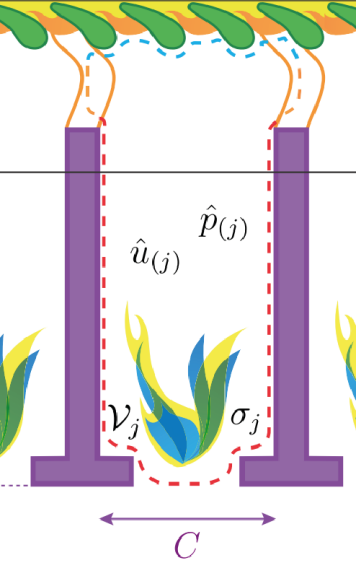
Modeling combustion instability in large gas turbines
Tiemo Pedergnana, D-MAVT, Combustion and Acoustics for Power & Propulsion Systems CAPS
Tiemo Pedergnana grew up in Winterthur, a town 25km from Zurich with a rich history of heavy industry, and he decided, at the age of 14, that he wanted to become a mechanical engineer. He obtained his Master's Degree at ETH Zürich in 2019 and is currently working in Prof. Noiray's group on modeling aero- and thermoacoustic instabilities.
The advent of renewable energies and the increased reliance on fluctuating power sources such as wind and solar present new challenges to grid stability. To bridge critical supply gaps, there is increased demand for high-performance, low-emission gas turbines, which puts the spotlight on a plaguing and recurring issue in their development: thermoacoustic instabilities. In this presentation, Tiemo focuses on modeling such instabilities in a can-annular combustor architecture, which is featured exclusively in GE's H-class gas turbines.
Ali Tayyebi received his BSc in electrical engineering from the University of Tehran, Iran in 2012, followed by two MSc degrees: the first in engineering mathematics (joint MATHMODS program) from the universities of L’Aquila (Italy), and Hamburg (Germany); followed by a second in sustainable transportation and electric power systems (joint STEPS program) from the universities of La Sapienza (Italy), Nottingham (UK) and Oviedo (Spain). In 2016, he joined the Austrian Institute of Technology (AIT) in Vienna, initally for his master thesis, then as a research assistant, and now for his PhD project, jointly with ETH's Automatic Control Laboratory (D-ITET).
His main research interest is the non-linear systems and control theory with applications to power system. In particular, his PhD research focuses on the design of grid-forming converter control for low-inertia power system. He has recently won the IEEE PES General Meeting 2020 best paper award.
The global energy generation transition from fuel-based generation to sustainable generation based on the renewable sources, leads to the emergence of low-inertia power systems. In this talk, the presenter revisits the fundamentals and challenges of the low-inertia power systems, then explores promising control-theoretic solutions designed to address their stability issues.
23.02.2021
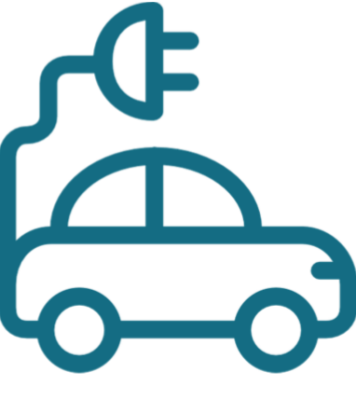
Trial my ride - Results from a field-experiment with test-driving battery-electric vehicles (BEVs) by mass-market consumers
Gracia Brückmann, D-GESS. Institute of Science, Technology and Policy ISTP
Gracia Brückmann is a PhD student, both at ETH’s Institute of Science, Technology and Policy (ISTP) and at D-GESS (CIS). Having previously studied economics, she is now researching decarbonisation of Swiss passenger cars through electrification, using survey and field experiments.
Her seminar presented the findings from a randomised control trial (field experiment) with a random sample of mass-market car consumers: some consumers were offered a BEV to drive for 48hours; others received information about BEV; whilst a control group received neither. This experiment was designed to examine previous claims that information and experience are essential to promote new energy-efficient technologies, such as the BEV. The findings examine both intention to adopt a BEV and actual adoption of BEVs by treatment status.
26.05.2020

Artificial Intelligence and 100% renewables, faster
Arsam Aryandoust (D-USYS)
Climate Policy
Artificial Intelligence (AI) experiences significant progress with most applications in the fields of optimal control and computer vision. In this presentation, I would like to show how valuable these advances are for our energy transition towards 100% renewable electricity systems. In fact, I want to introduce my thoughts on why we get to 100% renewables faster than expected through the recent progresses in these fields of AI, and how I personally contribute to it.
19.05.2020

Boosting decarbonization of mobility through EV's
Giacomo Pareschi (D-MAVT)
Aerothermochemistry and Combustion Systems Laboratory (LAV)
The adoption of electric vehicles is a key ingredient of the mitigation strategies required to reduce global CO2 emissions. However, the introduction of any new technology entails uncertainties and may pose new problems. What are the specific challenges that EVs face? And how can these challenges be understood and thus addressed? This presentation gives a short overview of simple modelling techniques that can help answering many of these questions.
12.05.2020

The Politics of Technological Change – Case Studies from the Energy Sector
Nicolas Schmid (D-GESS)
Energy Politics Group (EPG)
While energy technologies are key drivers of economic development and societal progress, their deployment and use is the main reason for anthropogenic climate change. Mitigating climate change requires fast and massive fuel switch from fossil fuel based to renewable energy technologies, as well as increased energy efficiency. Far from being a sole technical and economic challenge, such a transition is intrinsically political: (Policy-induced) technological change produces losers and winners, and hence is of distributional nature and subject to political contestation. Crucially, politics may slow down or even hinder energy transitions. Based on several case studies and in a mixed-methods approach, this PhD project aims at deepening our understanding of how exactly technological change affects energy politics. Such insights contribute to current academic debates, and they may help overcome political barriers to effective climate change mitigation.
05.05.2020

Identification of robust renovation strategies under uncertainties.
Alina Galimshina (D-BAUG)
Sustainable Construction, Institute of Construction & Infrastructure Management
Buildings are one of the largest energy consumers and greenhouse gas emitters in the world. As the biggest part of the energy consumed by the existing non-insulated building occurs during operation stage, retrofitting the building stock is important to reduce the environmental impact. However, selecting the best energy-efficiency measure for retrofitting existing buildings is difficult due to the uncertainties of events during the life span of the building. This project proposes a method to identify robust renovation scenarios in terms of environmental and cost performance for residential buildings in Switzerland.
28.04.2020

Long-term energy and emission pathways for the Swiss industry
Michel Obrist (PSI)
Laboratory for Energy Systems Analysis, external page Energy Economics Group (EEG)
Techno-economic optimization models are used to investigate the implications of climate and energy policy goals for the Swiss industry sector with a long-term perspective. The presentation provides a broad introduction into energy system modelling and optimization in an industrial context. Focusing on the Swiss cement sector, future energy and emission pathways are presented and discussed.
21.04.2020

Multi-agent maintenance scheduling based on the coordination between central operator and decentralized producers in an electricity market
Pegah Rokh Foroz (D-BAUG)
Institute of Construction & Infrastructure Management, Intelligent Maintenance Systems
Decision makers need to take the operational and production needs into consideration for optimal decision-making when scheduling maintenance activities. A two-level multi-agent decision support systems using negotiation algorithm for the generation maintenance decision (GMS) of power grids in an electricity market is presented.
07.04.2020

Piloting concrete as the Swiss carbon sink
Johannes Tiefenthaler (D-MAVT)
Separation Processes Laboratory
The Swiss climate strategy targets net-zero greenhouse gas (GHG) emissions in 2050. For climate neutrality, GHG emissions need to be avoided and non-avoidable emissions removed from the atmosphere and stored permanently. The Bundesrat estimated the amount of these negative emissions as 2.5 Mt CO2 per year by 2050. Within my research, I develop and demonstrate technologies which transform concrete into a value adding carbon sink. In addition, the ETH Spin-off Neustark originated from these activities.
31.03.2020

Marrying machine learning with control theory to change the way buildings consume energy
Felix Bünning (D-ITET / Empa)
external page Urban Energy Systems Laboratory
Heating and cooling of buildings are responsible for one third of the primary energy consumption in most developed countries. By combining machine learning with control theory, controllers that are both cheap and energy efficient can be designed. This is demonstrated with the example of model predictive control for heat pumps.
24.03.2020
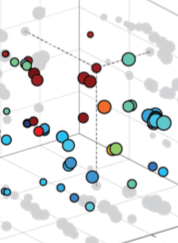
On the application of absorption-based CO2 capture processes to industrial point sources: A case study of the Chilled Ammonia Process applied to cement plants
José-Francisco Pérez-Calvo (D-MAVT)
Separation Processes Laboratory
With this work, we provide a methodology for the development and optimization of absorption-based post-combustion CO2 capture processes developed for power plants to industrial processes with higher CO2 concentration in the flue gas. The CAP is selected as case study. A comprehensive analysis of the new requirements when applying the CAP to CO2 capture from cement plants is presented. Modifications of the standard CAP flow scheme have been implemented and compared, and the optimum set of operating conditions have been found for different CO2 concentration levels in the flue gas with the aim of minimizing the energy consumption. Additionally, the design of the absorption columns is determined based on a new rate-based model for the absorption of CO2 with aqueous NH3 solutions that has been developed making use of new pilot plant scale experiments mimicking cement plant-like flue gas conditions.
17.03.2020

Forecasting energy demand of rural households to improve the electrification planning in developing countries
Cristina Dominguez (D-MAVT)
Building Physics
Giving access to affordable, reliable, and sustainable energy for all is listed as one of the Sustainable Development Goals proposed by the United Nations in 2015. To reach this goal, public and private institutions have been working on deploying different electrification strategies. The solutions include from installing stand-alone solar systems to grid expansion, but the starting point for any of these is to know the electricity requirements of the people living in the area where electrification is planned. This research presents a methodology to estimate the electricity needs of residential buildings in rural areas of developing countries; aiming at supporting the planning and design of electrification projects, as well as contributing to improve people’s quality of life.
10.03.2020

Effect of storage-hydropower related discharge and temperature alterations on Alpine river fish species
Robert Naudascher (D-BAUG)
Environmental Fluidics Group, Institute of Environmental Engineering
Balancing societal needs with the preservation of freshwater ecosystems requires an explicit understanding of the habitat parameters that sustain growth, survival, and reproduction of inhabiting species. Future energy scenarios predict that power storage and especially pumped- storage hydropower plants will be used more intensively to cope with intermittent supply from renewable energy sources. This trend is further enhanced by the recent governmental decision to phase out nuclear power production. Hydropeaking (German: Schwall-Sunk) is most commonly caused by releasing either a single, long-duration daily discharge peak or, more commonly, by releasing two short-duration peaks of increased magnitude that coincide with peak energy demand (i.e., double-peaking) and thereby maximize profits for the hydropower operator. In Switzerland alone, more than 1’000 km of rivers are affected by hydropeaking. Despite growing awareness of the need to protect natural ecosystems downstream of hydropower facilities, as demonstrated by the revision of the Swiss Waters Protection Act in 2011, many unknowns remain with regard to the direct effects of hydropower operation.
03.03.2020

Opportunities and challenges for key players in Rwanda’s Off-grid Power Sector
Churchill Omondi Agutu (D-GESS)
Energy Politics Group
The integration of on-grid and off-grid electrification approaches is vital to reaching 100% electrification in most of Sub-Saharan Africa’s countries. The Government of Rwanda, through its Energy Sector Strategic Plan 2018/19 - 2023/24, has set a target to reach 100% household electrification by 2024 with 52% of electricity sourced from the grid and 48% from off-grid solutions consisting of Mini-grids and Solar Home Systems, and to electrify 100% productive users by 2022. Reaching the objective requires the integration and clear alignment between stakeholders in the private and public sectors. This is especially important because the private sector will play a pivotal role in the roll-out of off-grid electrification solutions. The presentation highlights some preliminary key learnings from interviews with stakeholders in Rwanda’s off-grid power sector; including challenges and opportunities, and to identify some of the gaps that need to be addressed in working towards the government’s goal of 100% electrification.
25.02.2020
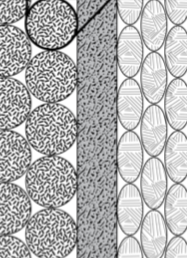
Technical and Ethical Considerations of Modern Battery Technology
Nils Wenzler (D-ITET)
Materials and Device Engineering (MaDE) Group
In the last few years Lithium Ion Battery (LIB) technology has improved rapidly, leading to a massive growth in produced and deployed capacity. With many countries stepping up their efforts in combating climate change this trend is poised to accelerate further. However, mining the raw materials used in today's batteries has strong environmental and ethical implications that need to be taken into account. This talk will explain the technical background of LIB technology and show why there is a continued need for these materials. It will then explore mining, recycling and potential new raw material sources. Finally, it will look at the ethical and environmental implications of the materials cycle and the leverage we have to change them for the better.
18.02.2020

Energy we all need … but how much renewable energy are we allowed to use within Earth system limits?
external page Harald Desing, Empa
external page Technology and Society Laboratory (TSL)
On a finite planet, the amount of renewable energy that can be harvested is limited. This seminar presents a newly developed method which considers the Earth system boundaries, state-of-the-art technology, the competition of RE with other human activities (e.g. food production) and uncertainty in the evaluation of RE potentials. Results generated from literature data are presented, along with indicators which could influence product and system design in a sustainable economy.
28.05.2019

Thermal-energy storage system integration with focus on advanced adiabatic compressed air energy storage (AA-CAES)
Philipp Roos (D-MAVT)
Renewable Energy Carriers, PREC
Energy storage is considered to be a key driver for the decarbonisation of the energy system. With increasing shares of renewable energy in the system, energy storage becomes a vital part that can bridge the gap between power generation and consumption. In this talk, Advanced Adiabatic Compressed Energy Storage (AA-CAES) is presented as an alternative energy storage technology that relies on Thermal Energy Storage (TES) for decarbonisation.
21.05.2019

Investigation of aerosol-cloud interactions near the North Pole
Andrea Baccarini (PSI)
external page Laboratory of Atmospheric Chemistry (LAC)
The Arctic is warming faster than the global average (Arctic amplification) and the extent of the sea ice coverage has decreased dramatically over the past decades. Clouds play an important role in the Arctic radiative budget as they have a net warming effect on the surface and can control sea-ice extent and thickness. However, numerical models are still unable to correctly represent Arctic clouds. In this pristine environment, clouds are often limited by the availability of aerosol particles on which water could condense to form cloud droplets, for this reason a better characterization of aerosol sources and process is of the utmost importance to improve our understanding of the Arctic climate. With this contribution we will present aerosol observations near the North Pole performed during the Arctic ocean 2018 expedition. We will particularly focus on formation of ultrafine particles and their role as cloud condensation nuclei in the Arctic.
Buildings are vital for any strategy to mitigate greenhouse gas emissions and energy consumption. Due to the long life cycle of buildings, the majority of buildings in use by 2050 are already built. Hence, building refurbishments are essential for performance improvements in the construction sector. However, building refurbishments are plagued by the performance gap, i.e., the predicted energy savings of refurbishments are significantly smaller than the predicted energy savings. This talk will present a framework to reduce the gap, recent results from case studies and ongoing work.
07.05.2019

Hydro-abrasion at hydraulic structures and steep bedrock rivers
Dila Demiral (D-BAUG)
Laboratory of Hydraulics, Hydrology and Glaciology (VAW)
High transport rates of bed load particles in combination with high flow velocities cause severe abrasion such as (I) bedrock incision in high-gradient mountain streams, and (II) hydro-abrasive erosion of concrete at hydraulic structures, particularly Sediment Bypass Tunnels (SBTs). A better understanding of the abrasion mechanics and the development of a realistic and mechanistic abrasion model are keys for the design and sustainable use of hydraulic structures and landscape evolution modeling. By means of 2D Laser Doppler Anemometry (LDA), high-speed video technique, and 3D precise laser scanning, systematic laboratory investigations are conducted on: (1) small- and large-scale turbulence structures of 2D and 3D high-speed flows, (2) bed load particle motion; and (3) hydro-abrasion processes. Based on the collected experimental data and field data, existing hydro-abrasion predictive models will be calibrated and enhanced.
30.04.2019

Thermoacoustic instabilities in tomorrow’s combustion systems
Giacomo Bonciolini (D-MAVT)
Combustion and Acoustics for Power & Propulsion Systems
What do the earth's climate, traffic jams, the stock market, infectious diseases and a gas turbine combustor all have in common? They can all exhibit a sudden transition to a catastrophic state, caused by a small variation in one of their system’s parameters. In the case of a combustion system, this variation might lead to a thermoacoustic instability, a phenomenon for which the flame emits high-amplitude, potentially destructive acoustic waves. In this talk, this very challenging problem in gas turbine development will be presented in the context of global energy market trends.
16.04.2019

Designing Incentive-Compatible and Coalition-Proof Payment Mechanisms for Electricity Markets
Orcun Karaca (D-ITET)
Automatic Control Laboratory
Under the well-established locational marginal pricing mechanism, participants can bid strategically to influence their payoff since these mechanisms do not incentivise truthful bidding. As an alternative, the Vickrey-Clarke-Groves (VCG) mechanism ensures that every participant finds it more profitable to bid truthfully regardless of the bids of the others. Despite these theoretical virtues, the VCG mechanism is susceptible to coalitional manipulations, such as collusion and shill bidding. This presentation proposes alternative payment mechanisms that are both truthful and coalition-proof.
09.04.2019
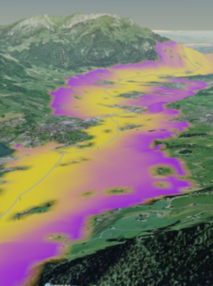
How to support decision-making when planning power transmission lines
Joram Schito (D-BAUG)
Geoinformation Engineering
Planning power transmission lines is highly contentious, as it affects many people over a long time and the constructions are visible in the environment we live. A decision support system might help decision-makers to determine an optimal path alternative with minimal post-decision regret. How would this work? This presentation describes the approach developed, recent results and ongoing work.
02.04.2019
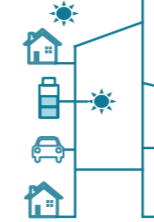
Smart grids or microgrids? Optimal design of future electricity distribution systems
Raphael Wu (D-MAVT)
Reliability and Risk Engineering
26.03.2019

Multi-energy systems: gas-electricity sector coupling
Andrea Antenucci (D-MAVT)
Reliability and Risk Engineering
The exploitation of a high volume of renewable power in the near future represents a challenge for the safe operations of the electric system. Balancing volatile and non-dispatchable resources requires a technical effort that exceeds the boundaries of the electric infrastructure and also impacts other interconnected systems, i.e. the gas system. The subsequent increase of interdependencies between gas and electric networks entails the necessity of dedicated studies that could provide insightful knowledge about the new dynamics of the future coupled infrastructures. The dynamics of interest are: the coordination of coupled operations under normal and abnormal conditions, the effects of sudden and unanticipated fluctuations of renewable generation, the mechanisms of failure propagation across the two infrastructures and the introduction of new storage technologies. This presentation aims to illustrate some of the technical and economic consequences stemming from the mutual interactions between gas and electric systems on future interdependent network operations, with a focus on the aforementioned joint dynamics.
19.03.2019

Wood - Coal - Oil. A Historical Look at Energy Consumption in Europe and America, 1800-2000
Egor Lykov (D-ARCH)
Institute for the History and Theory of Architecture
Current research on energy related topics usually looks at the present and even the future of energy although the ways of dealing with energy in the past is almost absent from the discussion. In this lecture, we will witness how historical energy research can contribute to better understanding of current and developing future energy sistems. This will be outlined along the key terms of existing works on history of energy and exemplified on the so-called "energy transitions".
12.03.2019

Time-optimal Control of the Formula 1 Hybrid Power Unit
Dr. Mauro Salazar (D-MAVT)
Institute for Dynamic Systems and Control
Since 2014, Formula 1 racing cars have been equipped with a hybrid electric power unit composed of an electrically turbocharged internal combustion engine and an electric motor used for boosting and regenerative braking. In this talk we present models and control strategies for the energy management of the F1 power unit to achieve the best possible lap time. We will first study non-causal numerical and analytical methods to derive and implement the optimal control policy on the car in a feedforward fashion. Secondly, we will compare two feedback control algorithms counteracting disturbances in a lap-time-optimal way: one based on MPC and the other one on equivalent consumption minimization strategies (ECMS). Numerical tests on convex and high-fidelity simulation environments will show the optimality and the robustness of the proposed approaches.
05.03.2019

Financing conditions: A missing link to explain rapid cost decreases in renewable energies?
Florian Egli (D-GESS)
Energy Politics Group
Renewable energy technologies, such as solar photovoltaics and wind, have spread rapidly throughout the world. This presentaion discusses the importance of financing conditions to make renewable energies cost competitive compared to other electricity generation technologies, such as coal, gas or diesel. Analysing the German market in-depth and over time, we document changes in financing conditions, determine drivers and discuss the importance of financial sector experience to drive down the cost of renewable energies.
26.02.2019
How hydropower operations can benefit from (subseasonal) weather forecasts
Samuel Monhart, WSL
external page Swiss Federal Institute for Forest, Snow and Landscape Research, WSL
No slides available
Hydropower in Switzerland plays an important role in Energy production and will be a key component for the implementation of the Swiss Energy Strategy 2050. Enhancing hydropower electricity production involves technological developments as well as optimising existing systems. One such aspect is the use of subseasonal hydrometeorological prediction. My presentation shows performance evaluations for meteorological forecasts for up to one month ahead combined with hydrological models to predict future streamflow conditions for a particular hydropower storage plant in Switzerland, leading to increased revenues and avoided spill.
29.05.2018

Power-to-gas and Hydrogen Storage for Decentralized Energy Systems: Application at the Neighbourhood and District Scale
Portia Murray (D-MAVT)
Building Physics
In order to support an increasing penetration of renewable generation in Switzerland, storage technologies will be required for the Swiss energy transition 2050 to mitigate the temporal mismatch of fluctuating renewable production and end-user demand. One such technology that allows for long-term storage of renewable electricity are power-to-gas systems with hydrogen storage. This presentation investigates this technology for its technical ability, environmental benefits and economic costs for applications in urban multi-energy systems until 2050.
22.05.2018

Sunlight-driven anti-icing and de-icing with metamaterials
Efstratios Mitridis (D-MAVT)
Laboratory of Thermodynamics in Emerging Technologies
Ice accumulation and formation on surfaces poses a serious problem in everyday life and infrastructure. We propose semi-transparent ultra-thin plasmonic film heaters as solar light absorbers for confined heating at the ice-surface interface. As a result, significant temperature increases and thus de-icing can be induced, but also the potential of such surfaces for anti-icing is explored.
15.05.2018

Regional health impacts of global electricity generation
Christopher Oberschelp (D-BAUG)
Ecological Systems Design
No slides available
Global electricity production is accompanied by a wide array of external impacts - global warming, respiratory diseases, depletion of fossil resources, and so on. Governments are aware of the burden caused by an ever-increasing electricity demand and try to improve their regulation to mitigate the effects. In this presentation, prominent examples of the regional differences in these burdens will be quantified and compared to current local regulations to identify mismatches and highlight options for improvement.
08.05.2018

Minimizing Energy Storage in Cyber-Physical Systems
Andrés Gómez (D-ITET)
Integrated Systems Laboratory
The emerging Internet of Things promises to deploy billions of sensing devices to monitor our environment, infrastructure and even our personal health. Energy has been a limiting factor in the economic viability of long-term deployments, due to prohibitive costs of energy storage. This presentation will give an overview of current trends in wireless sensor systems, which run entirely on energy harvesting.
24.04.2018

How to switch off high voltage DC current without using semiconductors
Lorenz Bort (D-ITET)
High Voltage Laboratory
Switching off a high voltage line under load - or even worse under short circuit conditions - is a non-trivial task. Switchgear must be able to interrupt several kiloamperes, driven by the grid voltage at several hundred kilovolt. This talk will give an introduction into the duties of HVAC and HVDC switchgear, and present the passive oscillation scheme which uses traditional AC gas circuit breakers to interrupt DC power. Interruption does not rely on expensive semiconductors, but creates a current zero crossing by using passive components only.
The research part focuses on the characterization of a model gas circuit breaker, notably the static and dynamic u(i) behaviour.
17.04.2018

Metamaterials and Metasurfaces
Claudio Hail (D-MAVT)
Laboratory of Thermodynamics in Emerging Technologies
No slides available
10.04.2018
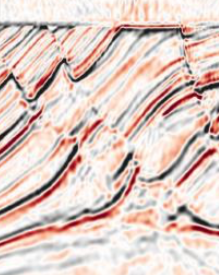
Can we hear the shape of the earth?
Linan Xu (D-ERDW)
Exploration and Environmental Geophysics
27.03.2018

Towards responsive deployment policies: an Agent-Based Model approach
Alejandro Nuñez-Jimenez (D-MTEC)
Sustainability and Technology, SusTec
No slides available
The remarkable diffusion of renewable energy technologies has been characterized by rapid technological change and extensive use of deployment policies. Yet their coexistence has not always been easy. Deployment policies experienced long periods of ineffectiveness followed by years of boom, caused by the difficulty of adapting the policies to the evolution of the technologies. Responsive deployment policies can overcome this problem. This presentation uses an agent-based model to evaluate a novel policy adjustment design to contribute to their development.
20.03.2018

A Sustainable Future Enabled by Power Electronics
Dominik Neumayr (D-ITET)
Power Electronic Systems Laboratory, PES
Power electronics is a key enabling technology for the current global megatrends - renewable energy systems, digitalization, electric transportation, internet of things etc. - which demand efficient and compact converter systems with future applications demanding higher performance at a lower cost. The discussion will cover a multi-objective optimization approach using the methodology of virtual prototyping, and finally, the challenges which had to be overcome when ETH participated in the Google Little Box Challenge to build the world smallest 2 kW inverter.
13.03.2018

Resilience of Electric Power Supply Systems
Max Didier (D-BAUG)
Structural Dynamics and Earthquake Engineering
Past natural disasters have shown that the electric power supply system is highly vulnerable to disaster loads. The functioning of modern communities depends, however, on the availability of electric power. In a holistic approach, the resilience of such systems, depending on the vulnerability and on the recovery of the components, needs to be assessed and improved.
06.03.2018

Optimal energy system design for buildings and districts
Somil Miglani (D-BAUG)
Building Physics
The Swiss energy strategy 2050 requires buildings to install renewable energy technologies and implement energy efficiency improvements in order to lower CO2 emissions. However, there are significant costs associated with each of these proposed interventions. In such a scenario, it is important to find optimal design solutions which minimize both costs and emissions. This presentation describes the application of mathematical optimization for the optimal energy system design for buildings and districts.
The transition of power generation from fossil fuels to renewable sources is a mayor challenge for the energy sector. A seamless integration requires the connection of new remote sources (e.g. offshore wind farms) as well as increasing long distance transport capabilities in the transmission grid. High voltage direct current (HVDC) networks offer a solution for this task. For a safe and reliable operation of such networks, circuit breakers to interrupt fault currents are the key enabling technology. However, the absence of current zero crossings and considerably higher interruption time requirements compared to AC make this a very demanding task.
In this talk, the challenges of interrupting fault currents in HVDC networks will be discussed and an overview on circuit breaker topologies to solve this problem given. The second part of this presentation deals with investigations on the performance of mechanical interrupters as key element in a number of different circuit breaker topologies.
30.05.2017

Optimal design of multi-energy systems including seasonal energy storage
Paolo Gabrielli (D-MAVT)
Separation Processes Laboratory
In recent years, the necessity of reducing the environmental impact of the current energy sector has led to the deployment of conversion and storage technologies based on renewable energy sources. In this context, multi-energy systems is a new paradigm which exploits the interaction between various energy carriers at design and operation phase, allowing for improved technical, economic and environmental performance. Within this framework, seasonal energy storage has recently caught much attention due to its ability to compensate the seasonal intermittency of renewable energy sources. However, compensating renewables fluctuations at the seasonal scale is particularly challenging: on one hand, a few systems, such as hydrogen storage and large thermal storage, allow offsetting seasonal variations; whilst on the other hand, the optimal design and operation are often hindered by the complexity of the optimization problem.
Our work aims at solving different issues arising when dealing with the optimal design of multi-energy systems involving seasonal energy storage from an integrated system perspective.
23.05.2017
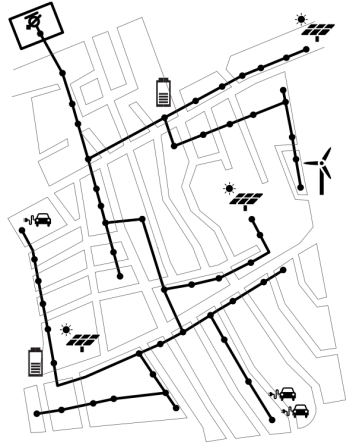
Real-time Optimization in Power Distribution Systems
Adrian Hauswirth (D-ITET)
Power Systems Laboratory
The deployment of distributed energy technologies such as photovoltaic plants, battery storage, flexible loads, etc. has a fundamental impact on the way power systems are being operated. Making the best use of these resources under volatile operating conditions to guarantee reliable and cost-efficient power supply is at the heart of current research in the field of active distribution networks, also known as “smart grids”.
This presentation outlines the main operational challenges grid operators are facing due to increasing renewable energy infeed and how novel feedback algorithms can be used to robustly optimize power grids in real-time with only limited information.
16.05.2017

Swiss Energy Turnaround: Can we meet our mobility demands in a sustainable way?
Brian Cox (PSI)
external page Technology Assessment Group
The electrification of transport technologies such as cars and buses has the potential to greatly reduce the environmental impacts of mobility, especially when powered by renewable sources of energy. However, in countries such as Switzerland where additional renewable electricity potential is limited, the increased electricity demand caused by these technologies may be met by fossil fuels or other energy sources that do not meet the ideals of the energy turnaround. This presentation covers life cycle assessment results for current and future transportation technologies in Switzerland with special focus on potential future energy sources.
09.05.2017

Hydropower expansion: Dam heightening and hydraulics of bottom outlets
Benjamin Hohermuth (D-BAUG)
Laboratory of Hydraulics, Hydrology and Glaciology
In the Swiss Energy Strategy 2050, hydropower production is predicted to increase along with improved flexibilty of operation, especially during winter. Dam heightening and increasing the reservoir volume are adequate measures to achieve these goals. However, the increased hydraulic head requires adaptations of the dam's safety structures i.e. the bottom outlets.
Bottom outlets regulate and, if required, lower the reservoir water level in the case of floods, imminent danger, structural damage of the dam or maintenance works. The high velocity flows in bottom outlets cause problems with cavitation erosion and flow chocking. This project aims to increase the understanding of the hydraulics of such flows and develop new design guidelines using hydraulic model tests.
Unusually for a Frontiers talk, this presentation is not the presenter's own research, for full details see external page Energiespeicher – Forschung für die Energiewendeit and external page Fraunhofer-Institut für Windenergie und Energiesystemtechnik IWES.
Energy storage is becoming increasingly important as conventional fossil energy is being replaced by renewable energy. A big challenge is to find reliable, affordable and very large scaleable energy storing technologies for whole countries. One promising approach to overcome this challenge is the concept of spheric underwater energy reservoirs.
25.04.2017

Black and brown carbon: Small particles with big issues
Jinfeng Yuan (D-USYS/PSI)
external page Aerosol Physics Group
Carbonaceous aerosols, including black and brown carbon nanoparticles, are emitted from incomplete combustion processes (power generation, transportation, biomass burning, etc.) and have a large impact on air quality, climate change and human health. This presentation mainly focuses on their optical properties relating to climate effect, and the measurement techniques from laboratory and ambient experiments.
11.04.2017
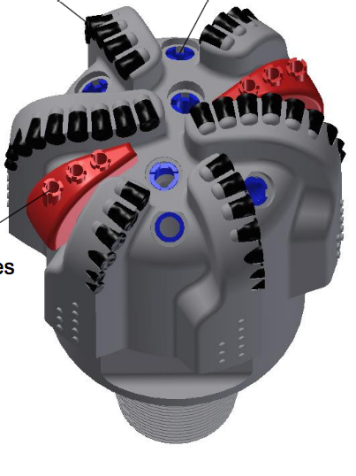
Exploration of deep geothermal resources: Towards a new drilling technology
Edoardo Rossi (D-ERDW)
Geothermal Energy & Geofluids group
In order to enhance the exploitation of hydrocarbons and to promote the development of geothermal energy production from deep resources, cost effective solutions to increase the drilling performance in hard rocks need developing. This presentation focuses on a promising approach that combines conventional rotary drilling with thermal spallation methods. The effectiveness of this technique is evaluated by means of experimental results and, finally, prospects and outlooks in the drilling research are proposed.
04.04.2017

Atmospheric new particle formation and climate sensitivity: the CLOUD experiment.
Ugo Molteni (PSI)
external page Laboratory of Atmospheric Chemistry
In the past 20 years atmospheric aerosol particles have been recognized as a risk factor in respiratory and cardiovascular diseases. Furthermore aerosols play a key role in climate regulation via their aerosol-radiation and aerosol-cloud interactions. Those suspended particles in a gas medium are either directly emitted into the atmosphere or formed in situ via gas-particle conversion processes. Once in the atmosphere aerosols are subjected to complex mechanisms, and global models are still affected by high uncertainty when it comes to explain these dynamics, the corresponding effect on climate and the link with anthropogenic activities. Understanding new particle formation and identifying contributing species is therefore extremely important in climate studies. The CLOUD experiment at CERN with its ultra clean chamber and state-of-art instrumentation sheds light on new particle formation processes and provides a better parametrization to climate models.
28.03.2017

Are Wind and Sun the Same? Cost-effective Renewable Policies for Intermittent Energy Sources
Clemens Streitberger (D-MTEC)
Economics / Energy Economics
The two most widely used new renewable energy sources, wind and solar energy, differ greatly in the available electricity generation over the day. Does this have consequences for their interaction with existing conventional production capacities and should policy-makers take this into account when designing renewable support policies?
21.03.2017
Next generation Li-Ion-batteries. Insights into all-solid-state
Reto Pfenninger (D-MATL)
Electrochemical Materials
No slides available
This study aims to make a valuable contribution towards a better understanding of the decomposition mechanism of the yet unstudied phosphoramidate category, thereby providing a foundation which could help in catalytic combustion (such as Scramjet engines) and incineration of toxic nerve gases. Taking advantage of the tunability of VUV synchrotrons radiation, the thermolysis process of dimethyl phosphoramidate was snapshoted by imaging photoelectron photoion coincidence (iPEPICO) spectroscopy recording the temperature dependant mass spectrum and the threshold photoelectron spectrum (TPES) for each relevant species, which allows for isomer-resolved species identification.
07.03.2017

Target-oriented imaging and velocity analysis using Marchenko-redatumed data
Constantin Mildner (D-ERDW)
Institute of Geophysics, Exploration and Environmental Geophysics
An accurate and detailed knowledge of the subsurface is important for energy related applications such as geothermal exploration. Recently, a new redatuming technique (Marchenko redatuming) has been published that allows the redatuming of seismic surface data to a new arbitrary depth level within the subsurface. We demonstrate this approach of redatuming, discuss possible applications, such as target-oriented imaging and velocity analysis using redatumed data, and show the advantage compared to an analysis using seismic surface data.
28.02.2017

Adaptive Photovoltaic Architecture
Prageeth Jayathissa (D-ARCH)
Institute of Technology in Architecture (ITA)
An adaptive solar façade is currently being developed at the ETH Chair of Architecture and Building Systems and is the topic of this seminar, in particular:
- Energy Saving Potentials of Adaptive Facades
- Aesthetic Integration of Photovoltaic into the building system
http://www.systems.arch.ethz.ch/research/asf-adaptive-solar-facade.html
21.02.2017

Fast Li+ ion conducting garnets: The key to safe and compact energy storage?
Michael Rawlence (EMPA)
external page Laboratory for Thin Films & Photovoltaics
Download Slides (PDF, 2.3 MB)
Advanced batteries are a prerequisite for some of the most revolutionary technologies of our time: smartphones, laptops, electric cars and drones are just a few examples. With current liquid based lithium ion batteries reaching a performance plateau, a new approach is needed which can overcome the prevailing issues and give rise to a new wave of applications.
This presentation gives an overview of the battery market and an analysis of the current roadblocks, followed by an introduction to solid state batteries based on fast lithium ion conducting garnets as a possible solution to safe and compact energy storage. Finally, the current progress in research is presented with an outlook to the future of solid state batteries.
31.05.2016

Integration of energy-economic system modelling and multi-criteria analysis
Kathrin Volkart (PSI)
external page Energy Economics
The world faces various challenges related to the energy system, e.g. climate change, (fossil) resource depletion, energy access, security of supply and air pollution. Addressing one of these challenges may influence (the solution of) others. This leads to complex decisions for energy policy-makers. Therefore, integrated and consistent assessment methodologies are required for decision support in view of the transition to sustainable energy systems.
The goal of this PhD thesis is the development of such an integrated methodology. The basis of Kathrin's work is an energy-economic system model which has been used for the development and quantification of global energy system scenarios which she merges with a detailed technology assessment methodology called multi-criteria analysis. The application of this novel methodology is expected to reveal trade-offs between different sustainability goals, and to lead to policy recommendations for the transition to sustainable energy systems.
24.05.2016
Emerging Organic-inorganic Hybrid Perovskite Solar Cells for High Efficiency Tandem Applications
Fan Fu (EMPA)
external page Laboratory for Thin Films & Photovoltaics
No slides available
Over the past few years, organometal halide perovskite solar cells have emerged as a game-changer in the photovoltaic field. In 2013, the perovskite solar cell was nominated as one of the ten major scientific breakthroughs. The power conversion efficiency has soared up to a certified 21% with only 5 years of development and the rapid increasing trend is still ongoing. This is a truly exciting technology.
This presentation mainly focuses on perovskite solar cells and their applications in high-efficiency tandem solar cells.
1. Generall overview of perovskite solar cells
2. Semi-transparent perovskite solar cells
3. Perovskite-CIGS tandem solar cells
Wireless sensors are becoming increasingly relevant because they provide information autonomously in a small form factor. Batteries only present a temporary solution to power these sensors because of their limited energy supply. By scavenging the energy from vibrations, it is possible to power the devices indefinitely. Vibrations are complex in nature, which usually makes linear approaches inadequate. Furthermore, vibrations are generally unwanted, therefore vibrations in structures are kept small in scale. Ideally, we would have the ability to locally amplify these vibrations and thereby expand the accessible energy without disturbing the integrity of the supporting structure or the comfort of the user.
The presentation opens with an extensive overview of the previous research on harvesting devices and their surrounding structure. This is followed by details of a new approach to control the flow of vibrations adaptively using a novel mechanically tunable nonlinear metamaterial.
03.05.2016

Residential energy demand and underlying efficiency in Switzerland
Nilkanth Kumar (D-MTEC)
Center of Energy Policy and Economics (CEPE)
Households consume energy to fulfill their demand for energy services such as a warm home, cooked food, lighting and hot water. But how efficient are they in doing this with respect to energy consumption? It is widely believed that improving end-use energy efficiency at the household level may yield significant reductions in energy consumption and CO2-emissions. We explain econometric approaches often used in efficiency analysis and estimate the level of energy efficiency of Swiss households using a stochastic frontier analysis approach.
03.05.2016

Mobility System as part of the Swiss Energy Perspective 2050: determine CO2 reduction potentials
Lukas Küng (D-MAVT)
Institute of Energy Technology, Aerothermochemistry and Combustion Systems Laboratory
The Mobility sector, which accounts for roughly one third of all CO2 emissions in Switzerland, plays an important role in the transition to a sustainable society. Possible paths to reduce CO2 emissions are by changing the consumer behaviour, the vehicle design and technology, or the fuel carrier. Modifications to the current status-quo along those paths directly impact the CO2 emissions, but to what possible extent? This presentation selects examples of such modifications in terms of their maximum CO2 reduction potential and additional effort.
26.04.2016

Two-phase Flow Studies in Nuclear Containment Venting Filters
Petros Papadopoulos (D-MAVT)
Laboratory of Nuclear Energy Systems
The safety of Nuclear Power Plants is based on a Defence-in-Depth system. Each safety layer ensures that even during a severe accident, the radioactive inventory is mitigated inside the containment. Containment venting filters are the last barrier between the environment and the radioactivity. Understanding the two-phase mass transfer in the pools of these filters will result in better predictions for the simulation codes.
19.04.2016

Carbon Dioxide Hydrogenation: New Synthetic Perspectives for Chemical Energy Carriers
Helena Reymond (D-MAVT)
Transport Processes and Reactions Laboratory
The hydrogenation of carbon dioxide (CO2) into chemicals and fuels is an innovative technology to mitigate CO2 emissions by the conversion of waste CO2 to methanol and formic acid. Because hydrogen production is an established, efficient process powered by renewable energy, large-scale CO2 hydrogenation can provide a green process for producing those alternative fuels/C1 feedstocks. The demand of methanol and formic acid in the near future is expected to drastically increase as methanol is a key C1 building block that can also be used in direct fuel cells and formic acid is considered as an efficient hydrogen carrier. While synthesis of methanol from syngas is a robust commercial process that can be readily adapted to CO2/H2 feeds, CO2 hydrogenation to formic acid is limited by thermodynamics and the facile decomposition of formic acid back to CO2 and H2. Furthermore, formic acid derivatives can only be produced using homogeneous catalysts, limiting process efficiency. The objective of this project is a direct conversion of CO2-derived methanol and formic acid to methyl formate intermediate in order to overcome thermodynamic constraints and to generate methanol and formic acid through its hydrolysis in a consecutive step. An efficient overall process requires the development of robust heterogeneous CO2 hydrogenation catalysts selective for formic acid. Hence, the detailed understanding of the overall process, from the catalyst design to the process engineering, remains a formidable challenge.
12.04.2016
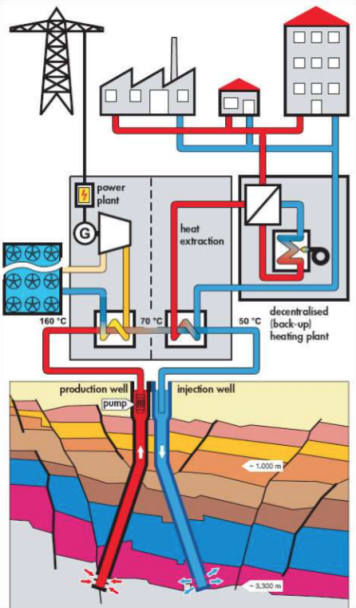
Geothermal energy for baseload electricity production in Switzerland
Thierry Meier (D-MAVT)
Transport Processes and Reactions Laboratory
There is a need to find alternatives to fossil fuels for different reasons: global warming (CO2 etc), and depletion of fossil resources. Some of the different and environmentally friendly alternatives are wind, solar, hydro, sea (membranes, waves) and geothermal energy. Every solution has advantages and drawbacks depending on the local resources. This talk covers the options available to exploit geothermal energy in Switzerland.
05.04.2016

Hydrothermal Spallation Drilling - a novel drilling technology for deep geothermal heat mining
Michael Kant (D-MAVT)
Transport Processes and Reactions Laboratory
In order to enhance the integration of geothermal energy in the energy market, the drilling costs have to be significantly reduced, as they account for up to 70% of the total investment for a geothermal power plant. Among the different attempts to intensify the conventional drilling process, spallation drilling is a promising approach. This technology is based on the effect that certain hard polycrystalline rocks locally disintegrate into small disc-like fragment, if rapidly exposed to high thermal loads, e.g. an impinging flame jet. Previous research have indicated that spallation drilling could decrease the drilling costs due to higher drilling velocities and significantly reduced maintenance time of the drill head. In view of increasing the efficiency of the process a profound knowledge of the optimal operating conditions, required nozzle design and the influence of the rock properties on the process is of utmost importance. Therefore, different experimental and numerical studies are currently performed at our laboratory.
22.03.2016

Distributed Battery Storage: Operation and Integration
Philipp Fortenbacher (D-ITET)
Power Systems Laboratory
This presentation focuses on how batteries can be intelligently controlled in real time to deal with high photovoltaic (PV) penetration in low voltage grids.
The second part explores the question: Which storage integration strategy (centralized or distributed) should be considered when investing in battery storage.
15.03.2016

Integration of Stochastic Renewables in the Swiss Electricity Supply System
Dr. Alexander Fuchs (FEN)
Research Center for Energy Networks (Forschungsstelle Energienetze – FEN)
Dr. Alexander Fuchs works for the Research Center for Energy Networks (Forschungsstelle Energienetze – FEN) at the ETH. This group acts as a bridge between academic research, industrial needs and social issues related to energy policy, shaping the transition to a more sustainable, reliable and cost effective future energy grid.
This presentation focuses on how recently planned energy and climate policies encourage the deployment of renewable energy sources (RES). RES, such as wind and solar, are inexhaustible, have a low carbon footprint and can operate on a small scale, enabling their usage in the distribution grid. They are however typically variable, producing uncontrollable and partly unpredictable amounts of electricity over time.
To ensure that the generated electricity matches the consumption on a second-by-second basis, additional stability measures will have to be provided for in future systems featuring a high share of RES. This project studies the optimal transformation of the current Swiss energy supply towards a more sustainable system through the integration of RES sources.
08.03.2016
Combustion Emissions: Atmospheric Pollutants and Mitigation Strategies
Simone Pieber (PSI)
external page Laboratory for Atmospheric Chemistry
No slides available
The global energy demand is mainly fulfilled by the use of combustion processes - especially in the transport sector and residential heating - by wood, gas, oil and coal combustion, and also in electricity production (e.g. gas- and coal-fired power plants). While CO2 mitigation in energy production by use of renewable feedstocks such as wood is a primary climate policy target, the contribution of other pollutants from combustion processes are less attended to. Carbonaceous ultrafine aerosol particles and gases (such as aromatic hydrocarbons) from incomplete combustion have adverse effects on human health and ecosystems, and both directly impact the climate by taking part in radiative processes and also indirectly by influencing cloud formation. In order to implement successful mitigation strategies for those pollutants, knowledge of their chemical nature, atmospheric transformation pathways and identification of sources and their strength are critical.
01.03.2016

Optimal Energy Management of Buildings and Districts
Georgios Darivianakis (D-ITET)
Automatic Control Laboratory
Building energy management is an active field of research as the potential in energy savings can be substantial. The energy supply options have increased with the introduction of renewables and the possibility of cooperative energy management within energy-hubs. The energy hub houses the expensive but energy efficient equipment that is shared by the building community, and provides the opportunity for load shifting operation among interconnected buildings. Significant efficiency gains can be envisaged but require sophisticated control systems that can handle the variability in energy prices, supplies and reliability in the presence of operational uncertainties, such as weather and occupancy.
23.02.2016

Use of 3D Geographic Information Systems for transparent and sustainable electric power systems planning
Joram Schito (D-BAUG)
Institute of Cartography and Geoinformation
Two teams are currently working on this project 'Use of 3D Geographic Information Systems for transparent and sustainable electric power systems planning' at the ETH: the Institute of Cartography and Geoinformation Engineering, and the Institute of Planning of Landscape and Urban Systems.
Joram Schito is developing an algorithm to compute the optimal corridor and path for new power lines based on geographical data and on the user's interaction. By defining restrictive areas and setting different weights for each influencing factor, the suggested corridor and path changes. The computation algorithm is implemented in a 3D decision support system that acts as visualization tool for the planning process and as information exchange platform.
Thomas Klein and Orencio Robaina are developing the 3D visualization platform by using Google Earth API and by adding additional data such as LiDAR data or SwissPhoto images to get a more realistic impression of the virtual landscape.
26.05.2015

Metal Oxides as Photoelectrochemical Water Splitting Candidates - Fundamental and Technological Challenges
Mario Bärtsch (D-MATL)
Laboratory for Multifunctional Materials
Download Slides (PDF, 4.2 MB)
In the field of solar energy conversion, the storage of energy is not yet fully solved. Photoelectrochemical water splitting allows us to convert energy directly into hydrogen as a chemical energy carrier and hence the storage of electricity in batteries and capacitors is circumvented. This talk covers the theoretical background of the field and focuses on the materials design. The requirements for industrial scale-up are discussed and provided by our industrial project partners.
19.05.2015

Perovskites as a New Material-Class for Solar to Fuel Conversion
Alexander Bork (D-MATL)
Electrochemical Materials
Download Slides (PDF, 2.8 MB)
Storing abundant solar energy in synthetic fuels is key to ensuring a sustainable energy future by replacing fossil fuels and reduce global warming emissions. In solar-to-fuel conversion, synthetic fuels are produced from splitting water and CO2 driven by solar thermal energy. This talk gives an introduction and theoretic background to the field of solar-to-fuel conversion. Design criteria for solar-to-fuel materials will be given and a new material will be revealed showing promising performance compared to state-of-the-art.
12.05.2015

CIGS thin film solar cells: material challenges for record efficiencies and industrial scale-up
Enrico Avancini (EMPA)
external page Laboratory for Thin Films and Photovoltaics
Materials Science & Technology
Sorry! Slides no longer available
In this talk I will briefly introduce some basic PV concepts, showing the advantages of thin-films for PV applications and describing the main technologies studied in our laboratories in EMPA. I will then focus on CIGS-based thin film solar cells: advantages and disadvantages compared to the other technologies, state-of-the-art material concepts and properties, limiting factors and challenges for high-efficiency solar cells and how it is possible to bring this technology to an industrial level.
05.05.2015

Design of Decentralised Urban Energy Systems
Dr. Akomeno Omu (D-ARCH)
Building Physics
Institute of Technology in Architecture (ITA)
Download Slides (PDF, 5.5 MB)
Urban energy systems are evolving from traditional centralised generation and long range energy transmission towards decentralised polygeneration systems that bring the conversion and storage of multiple energy carriers into urban areas. To achieve the maximum benefits, it is important that these decentralised systems are designed in a robust and rigorous manner that not only takes into account the spatial and temporal variations in end-use energy demand, but also explicitly incorporates the drivers that influence energy planning decisions (e.g. infrastructure and fuel costs, CO2 and air pollutant emissions, etc.). This talk introduces the mixed integer linear programming (MILP) model that has been developed to tackle these complex district scale energy planning problems, and presents a number of interesting real world applications of the model.
28.04.2015

Capacity Rents and Wind Penetration: Empirical Evidence from Spanish and British Electricity Markets
Mirjam Kosch (D-MTEC)
Centre for Energy Policy and Economics CEPE
Download Slides (PDF, 1.4 MB)
Higher wind penetration - due to renewable support schemes - leads to decreasing electricity prices and lower generation hours for conventional technologies. This leads to decreasing capacity rents, and hence, to lower incentives to invest in new or maintain existing capacity of conventional technologies. Using historical data of the Spanish and British electricity markets, we quantify the effect of wind power on revenues of conventional technologies and decompose the total impact into a price and a quantity effect.
21.04.2015

Stochastic programming and multi-horizon modeling with applications to hydro power planning
Hubert Abgottspon (D-ITET)
Power Systems Laboratory
Download Slides (PDF, 2.6 MB)
Water comes for free, nevertheless the profitable operation of hydro power plants is a difficult task, now even more so than in the past. In this talk the challenges in hydro power planning are described. In order to assist hydro power operators, decision tools based on stochastic models are necessary. Therefore modelling and solving methods in stochastic programming are scrutinised. Based on such methods, multi-horizon models are introduced and finally applied to the hydro power planning problem.
14.04.2015

Knowledge Creation across Industry Sectors in the field of Lithium-Ion Batteries - Which Sector Knows What, When And Why?
Annegret Stephan (D-MTEC)
Group for Sustainability and Technology
Download Slides (PDF, 1.3 MB)
Lithium-ion batteries are assumed to play an important role for future energy and transportation systems causing industry, academia and policy makers to accelerate technological innovation progress and hence technological change in this field. It is widely accepted that knowledge development and diffusion play a decisive role for technological innovations. As batteries can be decomposed into different components and subsystems, they are produced in different industry sectors. Thus, knowledge has to be developed and diffused within and across these industry sectors. However, we lack a detailed understanding of the patterns of knowledge development and diffusion. So, who knows what, when and why? Our talk addresses these questions by providing insights of an analysis of lithium-ion battery patents in Japan.
31.03.2015

How to Keep Dancing when the Party is Over: The Interplay of Policy and Corporate Strategy in the German Solar Energy Industry
Tillmann Lang (D-MTEC)
Group for Sustainability and Technology
Download Slides (PDF, 755 KB)
The German Renewable Energy Act ('EEG') turned Germany's solar market into the most vibrant and largest world-wide. But when support faded, the industry shrank to a quarter of its previous size in only 2 years - shedding light on German solar firms' dependence on regulatory support. So, can renewable energies transition into independence from regulatory support? And how? This talk addresses these questions by reflecting on learnings from the case of German solar photovoltaics.
24.03.2015

A Unit Commitment Assessment of Compressed Air Energy Storage in Texas’ Electricity Market
external page Dr. Jared B. Garrison
ETH, Forschungsstelle Energienetze FEN
The emerging integration of renewable energy has prompted a wide range of research on the use of energy storage to compensate for the added uncertainty that accompanies these resources. To quantify the operational behaviour, economic feasibility, and environmental impacts of compressed air energy storage (CAES), this work utilised a sophisticated unit commitment and dispatch (UC&D) model that determines the least-cost dispatch for meeting a set of grid and generator constraints. The presentation discusses the benefits of unit commitment models, the applicability of CAES, the advanced model calibration features, and the resulting economic feasibility of CAES in the Electric Reliability Council of Texas (ERCOT).
17.03.2015
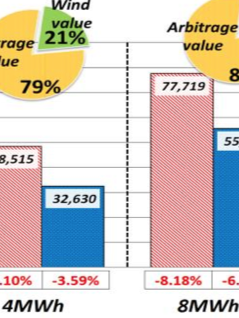
Integrated Modelling of Energy Systems INMES
Dr. Pedro Crespo del Granado
INMES Research Project
Energy Science Center, ETH
The 'Integrated Modelling of Energy Systems' (INMES) project is planning a framework for an integrated energy system model that encompasses a holistic approach and that will be hosted at the Energy Science Center (ESC) of ETH Zurich. Such a framework will enable researchers from within ETH or from other research organisations to run scenario analyses, test new modelling techniques and verify theoretical findings through simulation in the area of energy production, transportation, distribution and consumption. It will encompass all major energy carriers (i.e. electricity, gas, coal, oil, heat and cooling). The geographical scope will be worldwide, with a step-by-step increase in detail in the area of interest, e.g. Switzerland, its neighbouring countries and Europe.
10.03.2015

Introduction to Quantum Dot Nanocrystals and Nanocrystal Solids
Nuri Yazdani (D-ITET)
Laboratory for Nanoelectronics
Download Slides (PDF, 2.9 MB)
03.03.2015

High Pressure Polymer Electrolyte Electrolysis
Michel Suermann (PSI)
external page Fuel Cell Systems and Diagnostics
Electrochemistry Laboratory
No slides available
The production of electric energy from renewable sources is becoming increasingly important but because the fluctuating electric energy production does not match consumption, storage is required. Production of (pressurised) hydrogen (and oxygen) using dynamically operable polymer electrolyte electrolysis cells is one possible way for storage on different power/energy and gas pressure levels.
24.02.2015
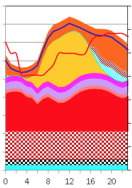
Alternative Low Carbon Electricity Pathways in Europe and Knock-on Effects on the Swiss Electricity system
Rajesh Pattupara (PSI)
external page Energy Economics Group
Laboratory for Energy Systems Analysis
Europe is currently at a crossroads with respect to its Energy future. Issues such as the phase-out of nuclear power plants, increasing investments in renewable technologies and ambitious carbon mitigation targets have increased the uncertainty regarding the future Energy (or more specifically for this study, Electricity) supply options. This talk aims at addressing some of these uncertainties for the Swiss electricity system in conjunction with developments in the neighbouring countries.
17.02.2015

The Hydrology of Supercritical Fluid Reservoirs near Cooling Intrusions: Implications for Electricity Production from High-Enthalpy Geothermal Systems
Samuel Scott (D-ERDW)
Institute of Geochemistry and Petrology
Groundwater circulation in volcanically active areas produces reservoirs of high-temperature water and steam that can be used as a source of renewable, baseload electricity. This talk described the basics of electricity production from high-enthalpy geothermal systems, as well as numerical models of fluid flow and heat transfer that reveal the geologic factors governing the formation and thermo-hydraulic behaviour of fluid resources.
